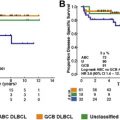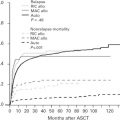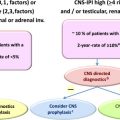
Improved biological insight has unveiled the complexity of aggressive B-cell lymphoma. In particular, diffuse large B-cell lymphoma (DLBCL) has been dissected into a variety of subtypes, such as primary central nervous system lymphoma, which require unique approaches. In addition, histologic subtypes previously considered clinical variants of DLBCL have been recognized as unique entities, such as primary mediastinal B-cell lymphoma, which exhibits a characteristic gene expression signature. DLBCL, NOS remains the most commonly encountered histologic subtype of aggressive B-cell lymphoma, but is itself largely heterogeneous. In addition to the molecular subtypes (activated B cell and germinal center B cell) identified by gene expression profiling, a large number of genetic aberrations have been identified and found to be variably present. The presence of dual translocation of MYC and BCL2 (or BCL6 ), commonly referred to as double-hit lymphoma, portends a poor prognosis and has been declared a separate entity within the most recent version of the WHO classification. Gray zone lymphomas exhibit pathologic characteristics that overlap different lymphoma subtypes (such as DLBCL and Hodgkin lymphoma) and represent a poorly understood category. Similarly, transformed lymphoma frequently resembles DLBCL morphologically, but is biologically diverse reflecting its varied pathogenesis. Finally, both Burkitt lymphoma and mantle cell lymphoma represent subtypes with pathognomonic genetic features, yet are molecularly and clinically heterogeneous.
While many patients with aggressive B-cell lymphoma (with the exception of mantle cell lymphoma) can be cured with immunochemotherapy, those who fail frontline management continue to have a dismal outcome. Recognizing the molecular diversity between subtypes and individual patients, at both diagnosis and relapse, will be essential to allow for a more rational and tailored therapeutic strategy. Importantly, a greater understanding of the underlying oncogenic mechanisms that drive these lymphomas has led to the discovery of potential therapeutic targets and to the development of novel agents that may exploit these processes. Future progress will rely on well-designed clinical trials employing validated biological predictive markers that enable patient enrichment such that promising agents can be evaluated in patients who are most likely to benefit.
Stay updated, free articles. Join our Telegram channel

Full access? Get Clinical Tree






